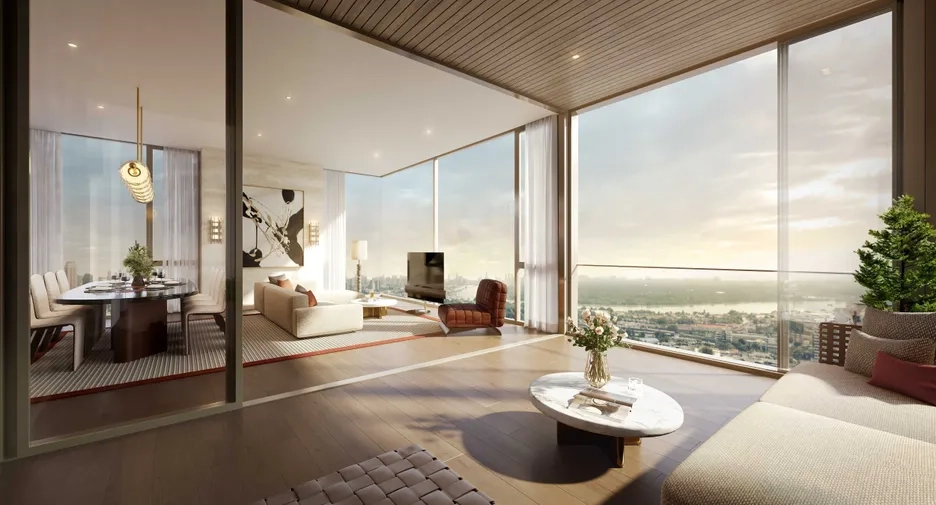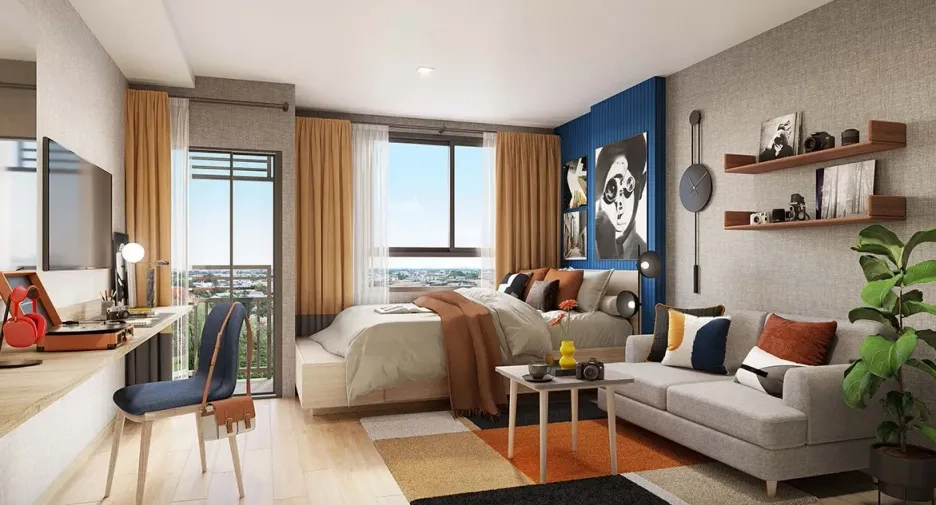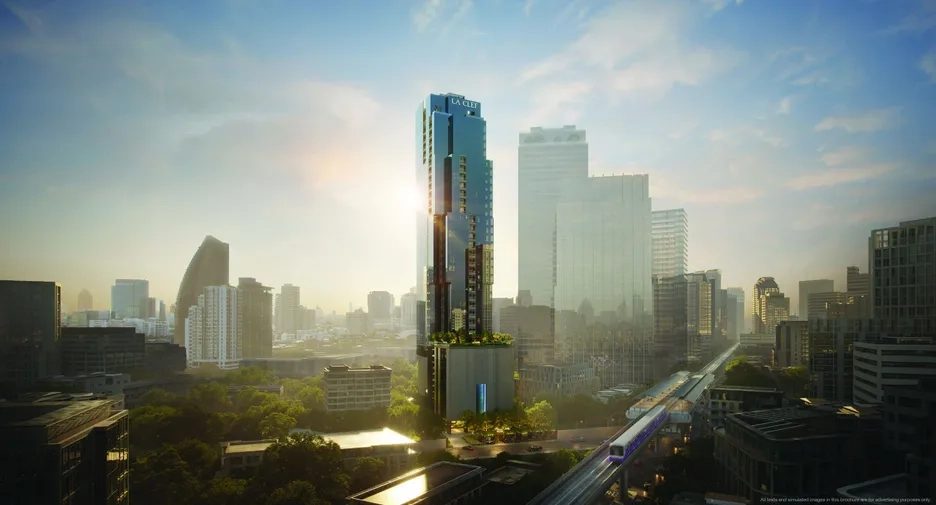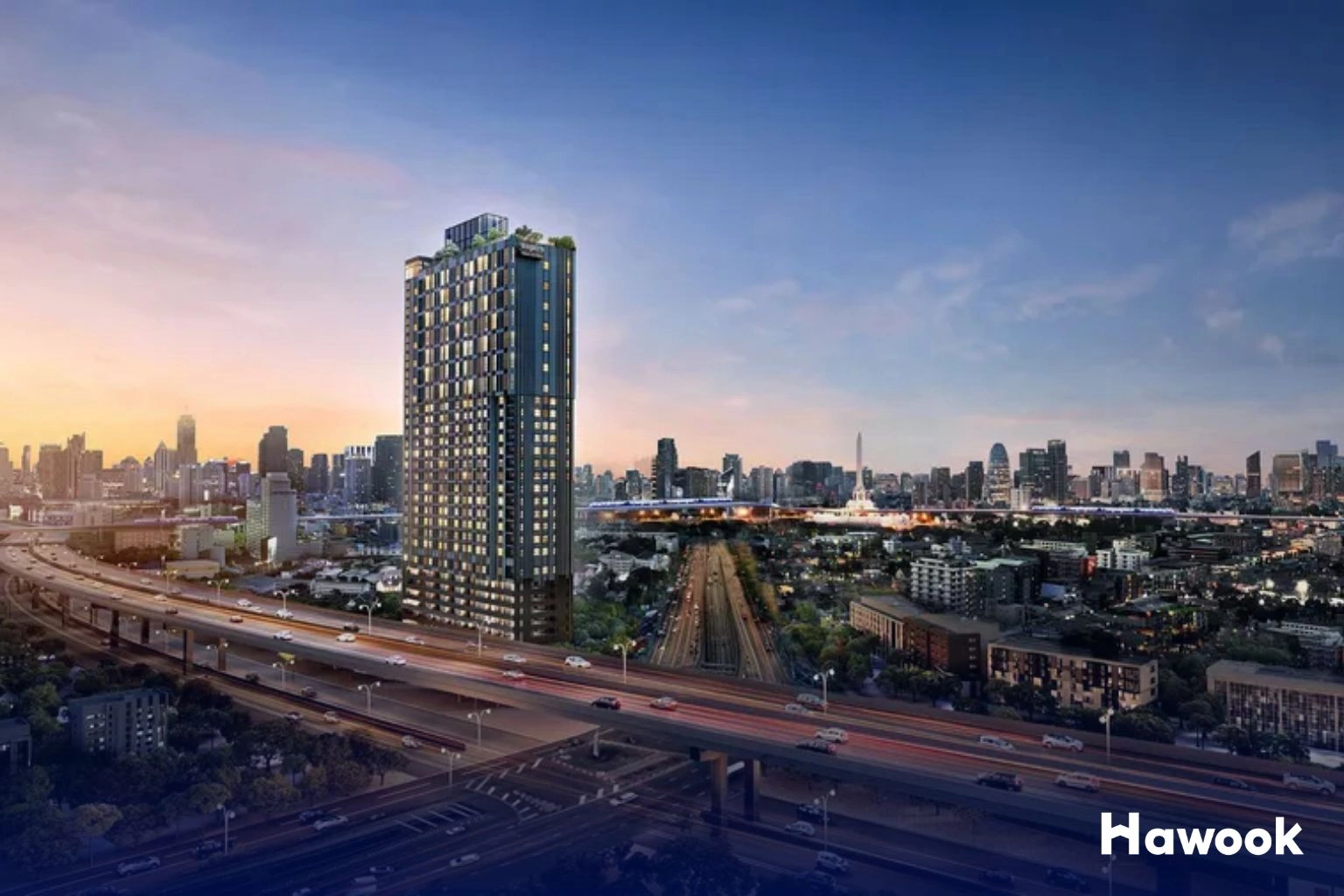Many headlines warn of a looming Bangkok Condo Oversupply, but the reality is more complex. While raw figures suggest thousands of unsold units, most are in fringe locations, undersized layouts, or locked under Thai ownership quotas — stock that international investors typically avoid. In prime downtown areas like Asok and Thonglor, absorption remains strong, with clearance rates above 90%. This article cuts through the noise to show why the real investable supply is far smaller than it appears, and how savvy buyers can still find high-performing opportunities in Bangkok’s condo market.
Table of Contents
The Myth of Oversupply
Scroll through headlines on Bangkok real estate and you’ll see the same warning repeated: “the city is drowning in unsold condos.” The narrative suggests an endless glut, with thousands of units left empty and investors at risk of being caught in a stalled market.
The reality is more nuanced. While the raw numbers of “unsold” condos look intimidating on paper, most of these units don’t actually fit what serious investors are looking for.
- Location: Many of the leftover units sit in fringe or isolated areas, far from the BTS or MRT. These are hard to rent, harder to resell.
- Unit Mix: A significant share of inventory is made up of ultra-small studios — technically cheap, but often unviable for long-term demand.
- Quota Restrictions: Foreign buyers can only own up to 49% of any condo building. Much of the so-called “oversupply” is locked in the Thai quota, unavailable to international investors.
Put simply: Bangkok’s condo market looks oversupplied on the surface, but once you filter for investor-grade criteria, the real supply is much smaller. And this distinction matters — because it explains why prime, well-located projects can still command strong demand despite the noise.
The Headline Numbers
On paper, Bangkok seems to have more condos than it knows what to do with. Some agency reports paint it as a market weighed down by unsold units. But when you dig into the source data, the picture starts to shift—and many of those headline stats come with important caveats.
- According to Knight Frank Thailand in their Q4 2024 Bangkok Condominium Market report: there was a 368.2% increase in newly launched supply compared to the previous quarter, with most of the new supply located in city fringe and suburban areas. Knight Frank
- Also from Knight Frank, new launches in city fringe were far more common than in Bangkok’s downtown core. For example, in Q1 2025, about 86% of new units launched were in suburban areas, with only 14% in more central/inner-city fringe zones. Knight Frank
- CBRE’s “Rare Condo Units in Downtown Bangkok Attract Buyers” (March 2025) shows that ready-to-move-in condominium projects in downtown Bangkok had a sales rate of 93%, reflecting strong clearance of completed stock as developers hold back on new launches in the downtown core. CBRE
Key Takeaways & Why They Matter
- Supply vs. Location: Much of the increase in supply is happening outside of core or highly desirable districts. Fringe and suburban locations dominate new launches. These are less attractive to foreign investors, who tend to value proximity to transit, amenities, and central business districts.
- Strong Clearance in Prime Areas: Downtown condos that are move-in ready are being absorbed at high rates: the 93% figure from CBRE suggests that in prime locations, supply isn’t building up the way headlines imply.
- Actual Investable Pool Is Smaller: If you combine these observations—with most supply outside prime zones + high clearance rates inside prime zones—you start to see that the number of unsold units viable for investors (especially foreigners) is far less than raw totals suggest.
Filter 1: Location (Transit-Linked vs. Isolated)
The first—and arguably most decisive—filter for Bangkok condos is location relative to transit. For investors, proximity to BTS and MRT lines isn’t just a lifestyle perk; it’s a hard financial filter that shapes both rental yield and resale liquidity.

Why Transit Access Matters
- Rental Appeal: Foreign tenants and younger professionals overwhelmingly prioritize easy access to BTS/MRT. A 5–10 minute walk radius around major stations consistently outperforms more isolated stock.
- Resale Liquidity: Condos within transit hubs are easier to sell, especially to fellow investors or end-users who don’t want to gamble on traffic-heavy commutes.
- Expat Demand: Corporate leases and long-stay expats cluster around well-served downtown districts, particularly Asok, Thonglor, Phrom Phong, and Sathorn.
The Divide in Supply
- Outer-Ring Oversupply: A significant portion of Bangkok’s unsold condo inventory sits in fringe locations—farther east toward Bangna, or deep into Ratchada-Rama 9 extensions. These units often come with lower price-per-sqm, but they struggle to attract serious long-term investors due to weak rental demand and slower absorption.
- Core District Resilience: By contrast, prime downtown areas remain tight. CBRE notes that ready-to-move-in condos in downtown Bangkok reached a 93% sales rate by early 2025, underscoring how fast well-positioned stock gets absorbed compared to fringe projects【web†source】.
Case Examples
- Fringe Example: Projects launched near outer Sukhumvit (Udom Suk, On Nut) often carry high unsold counts despite competitive pricing. Investors see limited rental depth, especially from foreign tenants.
- Core Example: A 40–50 sqm 1BR within walking distance of Thonglor BTS may command a higher price per sqm, but these units rarely sit unsold for long—reflecting strong absorption from both local and foreign buyers.
Investor takeaway: If you remove outer-ring and poorly connected projects from the data, Bangkok’s “oversupply” story looks far less alarming. The real shortage is in transit-linked, investor-grade units in prime districts.
| Submarket | Typical walk to BTS/MRT | Q1–Q2 2025 new launch share* | Ready‑to‑move‑in sales rate** | Avg asking rent (THB/sqm/mo) | Vacancy trend | What it signals |
| Downtown Core (Asok–Thonglor–Phrom Phong) | 3–8 min | Low (10–15%) | 90–95% | 750–900 | Tightening | Investor‑grade stock clears quickly; limited fresh supply. |
| Sathorn–Lumphini | 5–10 min | Low–Moderate (15–20%) | 85–92% | 700–850 | Stable to tightening | CBD and embassy demand supports liquidity and rents. |
| City Fringe (On Nut, Udom Suk, Ari) | 8–15 min | High (35–45%) | 65–75% | 500–650 | Stable to soft | Large pipeline; deeper discounts needed to move stock. |
| Outer/Suburban (Bangna, Ratchada–Rama 9 ext.) | 15+ min or shuttle | High (40%+) | 55–65% | 380–520 | Softening | Price-per-sqm looks cheap but absorption and rents lag. |
Filter 2: Unit Size & Layout
If location gets you in the right neighborhood, size and layout determine whether a unit actually performs. Bangkok’s last cycle over-produced micro-studios (20–25 sqm). They look cheap on a price tag, but they’re often a mismatch for renter expectations and long-term livability.

What renters actually want
- 1BR, 35–50 sqm: Sweet spot for singles/couples. Enough space for a real sofa, dining for two, and proper storage.
- 2BR, 55–75+ sqm: Families or sharers. Separate bedrooms with usable wardrobes and a living area that isn’t a corridor.
- Work-from-home flows: A nook or “plus” zone that fits a desk without eating the bedroom.
Why micro-studios underperform
- High churn, lower loyalty: Tenants outgrow 20–25 sqm quickly.
- Functional friction: Combo kitchenette + no dining + bed in the living zone reduces comfort and stay length.
- Resale pool shrinks: End-users and long-stay expats prefer “liveable minimums,” not just the lowest ticket.
Investment-grade layout rules of thumb
- Clear zones: Entry → kitchen (with ventilation) → living/dining → bedroom. Avoid layouts where the front door opens into the bed.
- Right-width living room: Aim ~3.0–3.4 m clear width so a sofa + TV + small table fit comfortably.
- Usable kitchen: A run of counter space + upper cabinets; induction hobs are fine if there’s ventilation and a prep surface.
- Door and wardrobe logic: Swing directions that don’t block circulation; wardrobes that fit full-length hangers.
- Natural light: One proper window per habitable room; avoid “light wells” as the only source.
Quick comparison (illustrative)
- Viable 1BR (≈40–45 sqm)
- Separate bedroom with sliding or solid door
- Window in living and bedroom
- Linear or L-kitchen with 1.8–2.2 m counter
- Bath with ventilation; room for washer
- Separate bedroom with sliding or solid door
- Non-viable micro-studio (20–24 sqm)
- Bed directly facing the entry or kitchenette
- Single small window at balcony only
- No dining zone; TV mounted over kitchenette
- Minimal storage; awkward bathroom
- Bed directly facing the entry or kitchenette
Investor takeaway: A “cheap” studio can be a false economy. Prioritize livable minimums (≈35–50 sqm 1BR; ≥55 sqm 2BR) with efficient, bright layouts. These units rent faster, churn less, and resell to a broader buyer pool.
Filter 3: Foreign Quota Availability
Even after screening for location and layout, the pool of investable condos for foreigners shrinks further due to legal quota rules.
The 49% Rule
By law, foreigners can own no more than 49% of the total saleable floor area in any condominium building. Once that quota is filled, additional units are restricted to Thai buyers only.
Why This Matters for Supply
- Many of the “unsold” units you see in agency reports are locked in the Thai quota. They may technically be on the market, but they’re not available for foreign ownership.
- In practice, this rule means the real supply available to foreign investors is far lower than headline numbers suggest. For every 100 units unsold, only a portion may legally be bought by foreigners.
- In prime downtown projects where foreign demand is strongest, the foreign quota often fills quickly, leaving remaining stock primarily Thai quota.
Investor Takeaway
For foreign buyers, quota availability is just as critical as price, size, or location. A condo may look attractive on paper—but if the foreign quota is already filled, it’s off-limits.
📌 For a full breakdown of ownership structures, restrictions, and workarounds (such as leasehold or Thai company structures), see Hawook’s dedicated guide on Foreign Ownership Rules in Thailand.
Filter 4: Developer Track Record
After filtering by location, layout, and quota availability, there’s still one more factor that narrows the field: the developer’s track record.
Why it matters
- Quality of build: Established developers tend to deliver projects closer to spec, with fewer post-handover issues.
- Property management: Strong brands maintain buildings better, which protects rental yield and resale value over time.
- Resale confidence: Buyers in the secondary market place a premium on known names, especially when comparing similar locations and layouts.
Tiered examples
- Proven majors:
- Sansiri – broad track record with international marketing reach, strong after-sales service.
- SC Asset – reputation for design and long-term management.
- Assetwise – growing presence with multiple successful handovers.
- Sansiri – broad track record with international marketing reach, strong after-sales service.
- Unproven developers: Small-scale or one-off developers without a strong history of delivery. These projects may look attractive on price-per-sqm, but the risk of construction delays, weaker management, or resale difficulty is higher.
Investor takeaway
For foreign buyers in particular, developer brand is not just a detail — it’s a filter that further reduces the true investable pool. A project with the “right” location, size, and quota can still fall short if the developer lacks credibility.
Tip: Hawook’s project reviews often highlight developer history so investors can separate solid long-term bets from speculative launches.
Why This Matters for Investors
At face value, Bangkok looks like a classic oversupply story: thousands of unsold condos, rising pipelines, and endless developer promotions. But once you run the filters — location, layout, quota availability, and developer track record — the picture changes dramatically.
- Headline vs. Reality: The “6,500 unsold units” figure shrinks quickly when you exclude fringe projects, micro-studios, Thai-quota stock, and unproven developers.
- Tight investor pool: What remains is a much smaller, highly competitive set of units that genuinely meet investor-grade criteria.
- Why prices hold: This is why prime resale stock in Asok or Thonglor still trades briskly, and why well-positioned launches downtown continue to see absorption, even at premium price points.
Investor Lens
For global investors comparing markets, this is critical. Bangkok is not drowning in condos — it’s a market where the surface-level oversupply masks a shortage of viable product. That’s why investors who cut through the noise consistently secure better-performing assets, while those who buy based on headline price-per-sqm often underperform.
Bangkok vs. Phuket: Strategic Allocation
Filtering Bangkok’s condo market reveals a tighter investable pool than headlines suggest — but context matters. For many investors, the right approach is not choosing either Bangkok or Phuket, but understanding how each market plays a different role in a portfolio.

Bangkok: Urban Core & Capital Growth
- Driver: Long-term rental demand from professionals, corporates, and expats.
- Profile: High-rise condos, transit-linked assets, global gateway city positioning.
- Returns: Steadier rental yields (≈3–5%) paired with capital appreciation potential as infrastructure and CBD districts mature.
Phuket: Villas & Lifestyle Yields
- Driver: Tourism, lifestyle migration, and rising appetite for branded villa projects.
- Profile: Low-rise villas and resort-led condos in lifestyle hubs (Bangtao, Cherngtalay, Naiharn/Rawai).
- Returns: Higher short-term rental yields (≈6–8%+ for well-managed villas) with strong lifestyle utility.
Portfolio Balance
- Bangkok = Defensive Core: Urban liquidity and capital growth anchor.
- Phuket = Yield & Lifestyle: Diversification into villa-driven cash flow and lifestyle upside.
📌 For a deeper dive, see our Bangkok vs Phuket Investment Guide, which breaks down returns, ownership, and demand drivers in detail.
Conclusion & Call to Action
Bangkok’s condo market is often portrayed as being oversupplied. But once you strip away the noise and apply practical investor filters — location, layout, foreign quota, and developer quality — the real supply pool looks far tighter.
This explains why prime downtown projects continue to sell through, why resale units in Asok or Thonglor still find buyers quickly, and why new launches from proven developers hold pricing power even in a crowded landscape.
For investors, the message is clear: Bangkok is not drowning in condos. It’s a market where clarity and selectivity create outsized outcomes.👉 Next step: Hawook can help you cut through the headlines and identify the rare units worth owning. Explore our Foreign Ownership Guide and Bangkok vs Phuket Investment Guide, or connect with us directly to access curated projects that meet true investor-grade criteria.






Join The Discussion